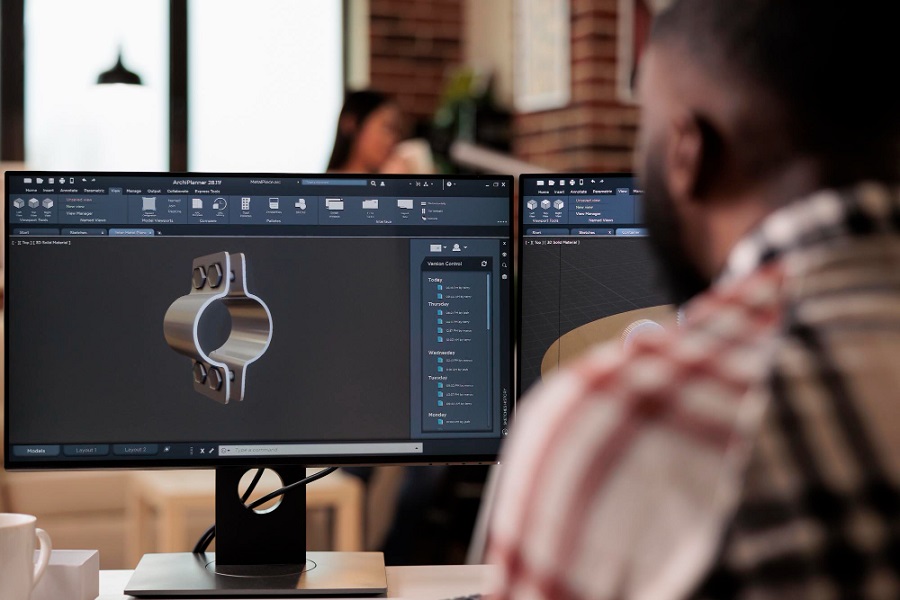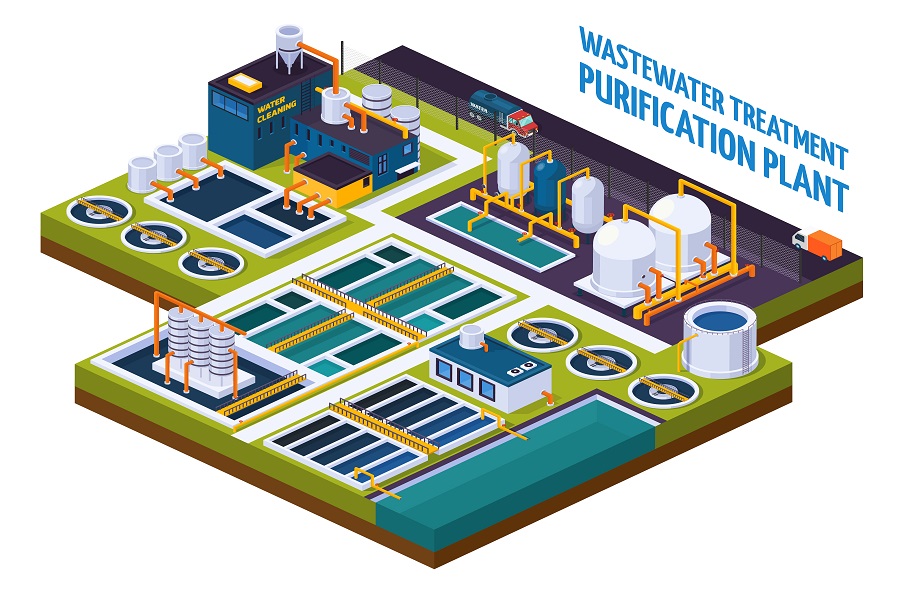A fire sprinkler system is an integral part of a building’s fire protection system. It is composed of various components, which, when installed correctly, can help to detect and prevent fires.
However, designing a fire sprinkler system is a detailed and intricate process that requires both expertise and meticulous planning. From sprinkler heads to pipes to pressure and more, everything needs careful consideration for the system’s effectiveness in the face of a potential fire.
In this blog, we take a closer look at the different components involved when designing a fire sprinkler system and how BIM makes the process of designing a fire sprinkler system quick, easy, and convenient.
Key Elements of Fire Sprinkler System Design
1. Water Supply
The first and foremost consideration when designing a fire sprinkler system is knowing the water supply source and volume. A reliable and sufficient water supply is critical for the system to function effectively. Fire sprinkler system designers must assess the source, pressure, and flow rate of water to efficiently meet the demands of the sprinkler system.
How BIM Helps: Building Information Modeling helps engineers to accurately model water supply systems while keeping into mind considerations such as pressure zones and flow rates. It enables precise simulation and analysis of the water supply network to ensure it meets the demands of the system during the fire.
2. System Type
From wet pipe systems to dry pipe systems, pre-action systems, and deluge systems, different buildings need different types of fire sprinkler systems based on their specific requirements. Each sprinkler system has distinct applications and advantages and the selection of the appropriate system type is critical for effective fire protection design.
How BIM Helps: BIM significantly contributes to this element by providing a dynamic platform for sprinkler drawing and modeling. It helps in the visualization and analysis of different system types in a 3D environment. It allows designers to create detailed 3D models of various fire sprinkler system types, providing a visual representation of how each system would function within the building. Designers can explore and compare wet pipe systems, dry pipe systems, pre-action systems, and deluge systems virtually and make an informed choice based on the building’s layout, occupancy, and specific fire protection needs.
3. Sprinkler Heads
The selection of the right sprinkler heads is vital for effective fire protection. That’s why, to keep the space well protected, factors such as the type, temperature rating, and coverage area of the sprinkler heads must be carefully chosen. Traditionally, firefighting experts followed a manual process for the selection of sprinkler heads. They relied on industry guidelines, standards, and their own experience to choose the appropriate sprinkler heads for a given building.
How BIM Helps: Today, most fire protection engineers have ditched the traditional methods and have moved to Revit 3D modeling for sprinkler head selection. By providing detailed information about each component, specialized Fire Protection software like AutoSPRINK facilitates the accurate creation of fire sprinkler layouts, based on parameters such as flow requirements, coverage area, and spatial relationships within the building model and easily extract Pre-Fab Drawings as well as Stocklists with just a click.
4. Pipe Layout and Sizing
The layout and sizing of pipes determine the water distribution throughout the building. Designers need to carefully consider factors such as pipe material, size, and configuration to ensure optimal water flow.
How BIM Helps: Building Information Modeling tools allow for precise pipe layout and sizing by automating hydraulic calculations. Designers can easily visualize the MEPF model in 3D and effortlessly mark pipe locations, determine pipe sizes, and instantly assess the impact on water flow, ultimately ensuring an optimal distribution network throughout the building. They can check for the best layouts to avoid clashes with other mechanical, electrical, and plumbing (MEP) components.
5. Pipe Material
In fire sprinkler system design, selecting the appropriate pipe material is crucial for ensuring durability, corrosion resistance, and compliance with safety standards. MEP experts need to make a choice between various materials such as steel, copper, or CPVC (Chlorinated Polyvinyl Chloride). Traditionally, this decision was based on factors like cost, availability, and specific application requirements, which was not always accurate.
How BIM Helps: With the advent of Building Information Modeling (BIM), designers can leverage data-rich models to analyze and choose materials more efficiently. BIM tools provide insights into factors such as material properties, cost, and performance, allowing designers to make informed decisions and optimize the fire sprinkler system’s overall effectiveness.
6. Hydraulic Calculations
Accurate hydraulic calculations are essential for determining the correct sizing of pipes, sprinklers, and water supply components. This ensures that water reaches all areas of the building with sufficient pressure.
How BIM Helps: Building Information Modeling tools, like AutoSPRINK and SprinkCAD, automate hydraulic calculations using advanced algorithms and engineering principles. The software utilizes hydraulic formulas to calculate the required pipe sizes based on factors like flow rates, pressure, and water density, ultimately ensuring an optimal distribution network throughout the building. Using these BIM tools, fire sprinkler system design experts can enhance efficiency, minimize errors, and ensure that the sprinkler system complies with the latest safety standards.
7. Backflow Prevention
Backflow prevention devices are crucial to safeguard the municipal water supply from contamination. These devices prevent water from flowing back into the public water system through the sprinkler system.
How BIM Helps: BIM tools facilitate the precise placement of backflow prevention devices within the 3D model, ensuring optimal functionality and adherence to safety standards. This technological integration enhances accuracy in design, promoting effective backflow prevention in fire protection systems.
8. Alarm and Detection Systems
Early detection is key in minimizing the impact of a fire. Integration of alarm and detection systems, including smoke detectors and heat sensors, enhances the system’s ability to respond promptly. Manually integrating these components into building design might not give the coverage and protection required.
How BIM Helps: Leveraging 3D modeling, fire protection systems engineers can strategically place smoke detectors and alarms in the virtual environment, ensuring comprehensive coverage and minimizing blind spots. BIM even facilitates coordination between different building systems and can automatically identify conflicts between different building components, which if left unresolved, may lead to issues like obstructed detectors.
9. Local Codes and Standards
When it comes to fire sprinkler drawing and modeling, compliance with local building codes and industry standards is non-negotiable. Designing the fire protection system in adherence to these regulations is extremely important for the safety and legal compliance of the building.
How BIM Helps: Before Building Information Modeling, achieving code compliance was a labor-intensive process that required a lot of manual checks and verifications. However, thanks to BIM, designers can now seamlessly incorporate local codes and standards into the digital model, allowing for real-time validation and adjustments. This ensures that the fire protection system aligns precisely with the regulatory requirements of the state.
10. Maintenance Considerations
Regular maintenance of a fire protection system is essential to keep the system in optimal working condition. It also helps in identifying and addressing potential issues promptly. Any negligence in maintenance can lead to system failures during critical situations, compromising the safety of occupants and property.
How BIM Helps: BIM provides a centralized database for all the information related to fire protection systems. It helps to generate detailed shop drawings and construction documents from the 3D BIM model. These drawings encompass essential details such as fire sprinkler and valve heads, pump head and fire head calculations, fire pump room layout, branch line configurations, and mains line specifications. This comprehensive documentation facilitates seamless installation and efficient maintenance of fire safety systems.
Fire Sprinkler System Designing Takes a Pro!
The successful design of a fire sprinkler system requires a holistic approach. Designers need to consider various factors to ensure optimal performance. Engaging with experienced fire sprinkler system contractors and staying abreast with industry advancements and regulations is essential for creating a fire protection system that not only meets legal requirements but also prioritizes the safety of occupants and property.
Hire fire sprinkler system design engineers from Enginerio and take your fire protection to the next level. Our seasoned BIM professionals bring in-depth expertise and a meticulous understanding of industry standards. From selecting the right sprinkler heads to designing efficient pipe layouts, our experienced AutoSprink & Revit teams ensure that your fire sprinkler system is tailored for maximum effectiveness. Connect with us today and stay ahead in fire safety with Enginerio’s comprehensive MEPF BIM services!






